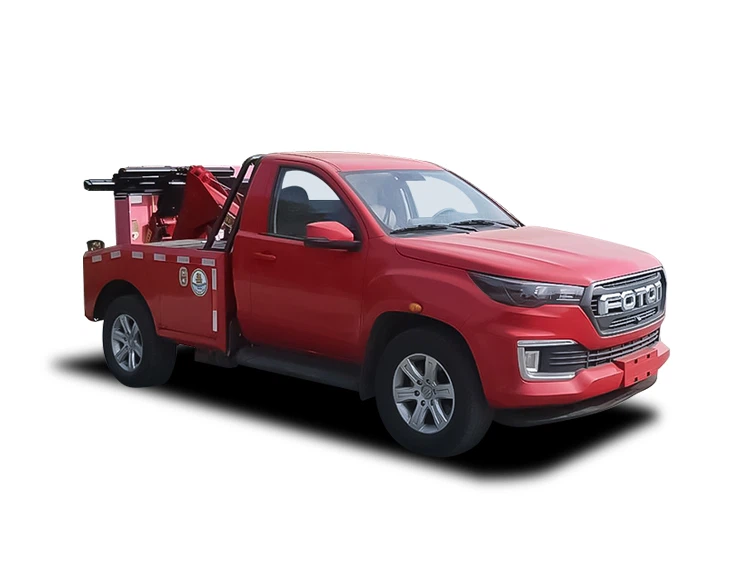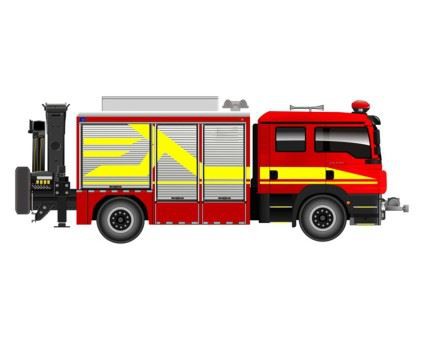Understanding Concrete Mixer Truck Capacity: A Comprehensive Guide

Concrete mixer trucks are essential vehicles in the construction industry, transporting concrete from batching plants to job sites. One of the most crucial aspects of these trucks is their capacity, which directly affects productivity and project timelines. This article delves deep into the various factors influencing concrete mixer truck capacity and offers practical tips to optimize usage.
1. What is Concrete Mixer Truck Capacity?
Concrete mixer truck capacity refers to the volume of concrete the truck can carry in a single load. This measurement is typically expressed in cubic yards or cubic meters. Understanding the truck’s capacity is vital for both construction companies and contractors, as it impacts how much material can be transported at once and how many trips are required to complete a project.
1.1 Factors Influencing Capacity
The capacity of a concrete mixer truck can be influenced by several factors, including:
- Design of the Truck: Different models and manufacturers may have varying capacities.
- Type of Concrete: Certain types of concrete mixes may require specific configurations that impact truck capacity.
- Load Limitations: Regulatory weight limits can affect how much concrete can actually be loaded onto the truck.
2. Types of Concrete Mixer Trucks and Their Capacities
Concrete mixer trucks come in various types, each designed for specific applications. Here’s a breakdown of the most common types:
2.1 Standard Transit Mixers
Standard transit mixers typically have capacities ranging from 8 to 14 cubic yards (6 to 10 cubic meters). These trucks are equipped with a rotating drum that mixes concrete while transporting it.
2.2 Mini Mixers
Mini mixers are suitable for smaller projects and typically have capacities ranging from 3 to 5 cubic yards (2 to 4 cubic meters). They are highly maneuverable and ideal for urban environments.

2.3 Volumetric Mixers
Volumetric mixers can produce concrete on-site and often have capacities between 8 and 10 cubic yards (6 to 7.5 cubic meters) per load. These mixers allow for custom mixes as per the project requirements.
2.4 Heavy-duty Mixers
These mixers are designed for large-scale projects and can carry upwards of 16 cubic yards (12 cubic meters) per load. They are generally used on significant construction sites.
2.5 Other Specialty Mixers
Some manufacturers produce specialty mixers designed to transport specific types of concrete, such as self-consolidating concrete or lightweight aggregates. Their capacities can vary widely based on their design and intended use.
3. Determining the Right Capacity for Your Project
Choosing the right concrete mixer truck capacity for your project is critical for efficiency. Here are key considerations to make:
3.1 Project Size and Scope

Evaluate the overall scope of your project. For smaller jobs like residential driveways, a mini mixer may suffice, while larger commercial projects may require standard or heavy-duty mixers.
3.2 Delivery Schedule
Consider your deadlines. If time is of the essence, choosing a truck with a larger capacity can reduce the number of trips required, thereby speeding up the delivery process.
3.3 Local Regulations
Research local weight restrictions and traffic regulations, as these may affect how much concrete you can legally transport at one time.
3.4 Site Accessibility
Examine the construction site for accessibility. Smaller mixers are often necessary for tight spaces or urban locations.
4. Practical Tips for Optimizing Concrete Mixer Truck Capacity
4.1 Use Quantity Calculators
Utilize online calculators to determine the amount of concrete needed for your project, ensuring that you select a truck with adequate capacity.
4.2 Plan Your Delivery Schedule Wisely
Plan out your concrete delivery schedule in phases to maximize truck capacity and minimize waiting times on-site.
4.3 Communicate with Your Supplier
Establishing clear lines of communication with your concrete supplier can help to ensure that the right truck capacity is allocated for your project.
4.4 Manage Your Mix

Understanding your concrete mix specifications can drastically improve efficiency. Different mixes may require specific truck types or operational methods.
5. Common Misconceptions About Concrete Mixer Truck Capacity
5.1 All Trucks Have the Same Capacity
This is not true; capacities vary by truck type and model. It’s important to choose the right one based on your project needs.
5.2 Larger Capacity Equals Better Performance
A larger truck doesn’t always mean better performance; site conditions and project specifications must also be considered.
5.3 You Can Overload a Truck
Overloading a truck not only violates safety regulations but can also damage the vehicle and compromise the quality of the concrete mix.
6. Maintenance of Concrete Mixer Trucks
Regular maintenance of concrete mixer trucks is crucial to ensure their longevity and optimize performance. Here are some maintenance tips:
6.1 Regular Inspections
Conduct regular inspections to check for wear and tear, especially on the drum and discharge chute.
6.2 Fluid Checks
Consistently check and top off hydraulic and engine fluids to ensure the truck operates smoothly.
6.3 Wash the Drum After Use
It’s essential to wash out the drum after every load to prevent the concrete from hardening inside, which can damage the mixer.
6.4 Tire Maintenance
Monitor tire pressure and tread wear to ensure safe and efficient operation.
7. Economic Factors Related to Concrete Mixer Truck Capacity
Understanding the economic implications of truck capacity can help project managers budget effectively. Here are several factors to consider:
7.1 Cost per Load
Calculate the cost-effectiveness of using a larger truck with more capacity compared to making multiple trips with smaller trucks.
7.2 Fuel Efficiency
A truck that optimally uses its capacity can help save on fuel costs over time due to reduced trips.
7.3 Labor Costs
Reduced travel costs can also minimize labor expenses since fewer trips often require less time spent on the road.
8. Frequently Asked Questions (FAQs)
8.1 What is the average size of a concrete mixer truck?
The average concrete mixer truck size ranges from 8 to 14 cubic yards (6 to 10 cubic meters).
8.2 How is the capacity of a concrete mixer truck measured?
The capacity is typically measured in cubic yards or cubic meters based on the volume of individual loads.
8.3 Can I legally overload a concrete mixer truck?
No, it is illegal to overload a concrete mixer truck beyond its rated capacity, as it poses safety risks and can result in penalties.
8.4 How do I calculate how many loads I need?
Divide the total volume of concrete required by the capacity of the mixer truck to determine the number of loads needed.
8.5 What are the consequences of using the wrong mixer size?
Using the wrong size can lead to project delays, increased costs, and potential safety issues on-site.
8.6 Can I rent a concrete mixer truck?
Yes, many companies offer rental services for concrete mixer trucks, providing options based on project needs.
